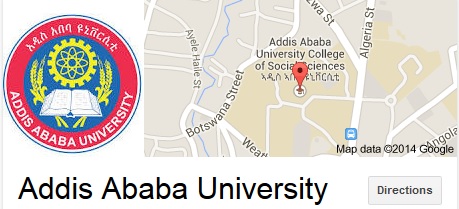NORAD-LCB
Introduction
“Linguistic Capacity Building – Tools for the inclusive development of Ethiopia” is a joint project between Addis Abab Uiversity, Hawassa University, University of Oslo and the Norwegian University of Science and Technology” funded by NORAD (Ref. no. QZA-0487 ETH-13/0014) from 2014-2018.
The main aim of this project is to increase the knowledge and capacity at Ethiopian universities to develop resources for disadvantaged spoken and signed languages, and to provide the possibilities for children and adult speakers of these languages to use them in education and other democratic arenas that are important for the development of modern Ethiopia. By disadvantaged languages we mean those that are not fully researched, and that lack resources such as orthographies, descriptions of their grammar, dictionaries and hence, teaching material. Capacity and knowledge building for disadvantagedspoken and signed languages in Ethiopia are central components in development.
Outcomes:
The project aims at building capacity at AAU and HU, and offer new linguistic knowledge to local educators. There are three cornerstone outcomes of our project. They are capacity building for:
1) sign language (students and university staff)
2) disadvantaged spoken languages (students and university staff),
3) new language resources to local educators and authorities.
The project will finance 18 MA scholarships. It will further finance fieldwork and processing of field data for a total of 13 PhDs (more than half of which will be fully funded and the remaining partially funded) and a number of staff at Addis Ababa and Hawassa universities and develop a network of people for each cornerstone. The networks wiII consist of students and staff at the Ethiopian and Norwegian universities taking part in the project, but importantly also include representatives of local authorities and some local educational institutions. The cross-cutting issue of gender is crucial, and we aim for as many women as men for the scholarships.
The project will strengthen existing MA and PhD programmes and help develop two new MA programs, one in sign language at AAU and one in muItilingualism and communication at HU.
In addition the Norwegian professors and staff will offer courses and supervision at MA level (in both new and existing courses) and at PhD level.
Tools that will be vital in the development of orthographies, grammars, dictionaries, and primers will be developed at the Department of Linguistics and Philology, Addis Ababa University, with a close collaboration with the Language technology team of University of Oslo.
The following outputs are planned within the project:
- Grammatical description of 5-6 languages including sign language
- Orthographies for 4-5 languages
- Primers for 5-6 languages,
- Dictionaries or glossaries for 4-5 languages
- Text corpora for four languages, and
- Speech corpora for 4-5 languages.
More concretely, we will investigate four groups of languages
- Ethiopian Sign Language: especially investigation of the grammar
- Very disadvantaged languages, for example East-Omotic languages spoken in South Omo Zone of SNNPR like Aari (ca 200.000 speakers), Hamar (45.000), or Gurage languages, like Ezha (120.000), Muher (90.000), Gyeto (80.000): Orthographies, grammars, glossaries, dictionaries.
- Smaller Semitic, Cushitic and Omotic languages (but with more than one million speakers each) that have orthographies, but that need reform, standardization and education material: Sidaama, Hadiyya, and Gammo.
- The dominant languages Amharic, Tigrinya, Afaan Oromo, and Somali: mostly for points of comparison and for testing language technology development.
Project Participants
Addis Ababa University
- Derib Ado: Project Coordinator
- Baye Yimam
- Feda Negesse
- Girma Mengistu
- Moges Yigezu
- Shimelis Mazengia
- Zelealm Leyew
Hawassa University
- Fekede Menuta
- Nigussie Meshesha
University of Oslo
- Janne Bondi Johannessen (linguistics and language technology): Project Coordinator
- Lutz Edzard (Semitic linguistics)
- Ruth Vatvedt Fjeld (lexicography)
- Elizabeth Lanza (multilingualism)
- Unn Røyneland (language planning)
- Jan Svennevig (political communication)
- Kjell Magne Yri (African linguistics)
- Lilja Øvrelid (language technology)
- philol: Kristin Hagen (language technology staff)
- Anders Nøklestad (language technology staff)
- philol. Joel Priestley (language technology staff)
Sør-Trøndelag University College
- Lindsay Ferrara (sign language)
- Rolf Piene Halvorsen (sign language)
Norwegian University of Science and Technology:
- Björn Gambäck (language technology and Semitic languages)
PhD students:
Addis Ababa University:
- Almaz Wasse (partially-funded)
- Binyam Ephrem (partially-funded)
- John Koang
- Melkeneh Seid
- Pawlos Kassu
- Andargachew Deneke
- Woineshet Girma
- Abay Tesfay (partially funded)
- Awlachew Shumneka (partially funded)
- Etaferahu Hailu (partially funded)
Hawassa University:
- Emebet Bekele Birkie
- Solomon Getahun Assefa
- Tsehay Abza Debo
Fully-funded MA students, Hawassa University – Status: completed their studies:
- Abate Hagos
- Sisay Digafe
- Yekatiti Hailu
- Yigeremu Kiflu
- Wendimagegn Tesfaye
Partially-funded MA students, Hawassa University – Status: completed their studies:
- Alemayehu Egato
- Ashagre Lefamo
- Luther Balicha
- Tamirat Shibiru
MA students fully funded, Hawassa University – Status: active:
- Assefa Abate
- Berhanu Beyekalo
- Manahil Tilahun
- Nejimya Rida
- Safaye Gobena
- Yifru Abeba
MA students partially funded, Hawassa University – Status: Active:
- Sileshi Negash
- Tamene Daysmi
- Teka Senbeta







